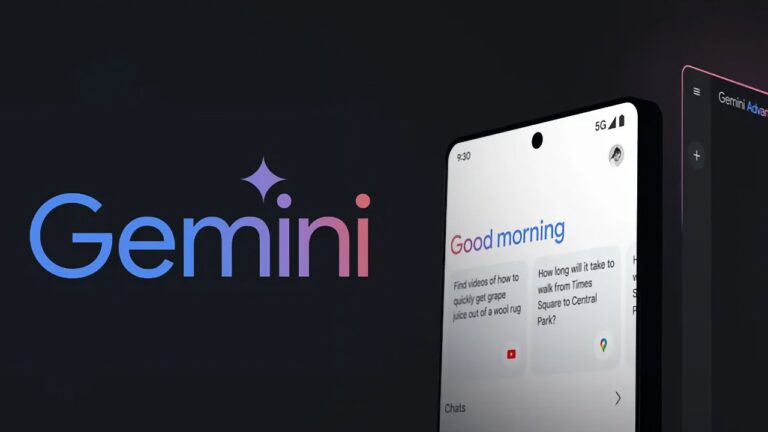
Audience
- Sentiment: Mixed
- Political Group: Moderate
- Age Group: 18-34
- Gender: All genders
Overview
- The emotional landscape of software updates includes excitement for new features and fear of negative impacts.
- Not all updates are detrimental; many bring significant improvements and enhance user experience.
- Clear communication and user empowerment are vital for companies to maintain trust and satisfaction regarding updates.
Embracing the Ups and Downs of Software Updates
Have you ever felt a strange mix of excitement and dread when your favorite gadget tells you it needs a software update? You know what I mean—the little notification pops up, and suddenly you’re caught in a whirlwind of emotions. On one hand, there’s the thrill of new features and improved performance. On the other hand, there’s that nagging fear: will this update make things worse instead of better? In this article, we’ll dive deep into this roller coaster of feelings surrounding software updates, especially focusing on how they can be a blessing or a curse for users.
The Good, the Bad, and the Ugly of Software Updates
Software updates are like that surprise party your friends throw for you. It’s exciting to see what everyone has planned, but there’s also a chance they could forget your favorite cake. Updates aim to improve our gadgets—whether smartphones, computers, or smart home devices—but they can also lead to a frustrating experience if something goes wrong.
Ever heard about “planned obsolescence”? It’s the idea that companies intentionally make products that won’t last long, so you need to buy new ones. While it could be just a conspiracy theory, many people feel that software updates sometimes serve this purpose. That’s especially true in the printer industry, where a common complaint is that new updates lock certain features behind paywalls. Imagine being told that you have to pay extra to use a feature you’ve always had access to! It feels like the company is holding your printer hostage until you pay up. This definitely leads to mixed feelings—frustration from users and profits for the companies.
Not All Updates Are Created Equal
Now, let’s set the record straight: not all updates are misleading money grabs. Some updates are genuinely amazing! Take the Hatch Sleep app, for example. It’s an app designed to help people sleep better by controlling the lights and sounds in their rooms. Users have reported that with updates, the app introduced new soundscapes for relaxation and sleep. Users can now enjoy various options instead of listening to the same old waves crashing repeatedly. When people get better sleep, they feel energized, focused, and ready to tackle the day. Now, that’s a good upgrade!
Another cool example is Valve’s Steam Deck, a handheld gaming device. With updates, the Steam Deck team has improved game compatibility and performance, allowing players to enjoy their favorite games more smoothly. Users are not only getting a better gaming experience but also discovering new features that allow them to play games in ways they never thought possible. Can you imagine picking up a console that keeps getting better instead of fading away after a few months?
Why We Fear Updates
Despite the positive stories, there’s still a deep-rooted fear that comes with software updates. For many, it’s less about losing features and more about the idea that they’ll be forced into a corner where they have to pay to unlock what they already had. Companies have to balance making money with giving users a quality experience. When the scales tip too far toward profit, frustration grows.
Some might feel like they’re living in a race car but only getting to use an economy engine. The excitement of what you think your car can do disappears when you’re not allowed to use its full potential. Many users wish that companies would focus more on ensuring our gadgets help us instead of squeezing us for every penny.
It’s natural to fear what you don’t understand. Whenever an update rolls out, users may think about past experiences when updates resulted in bugs that made their devices glitchy or some features stopped working altogether. So, it makes sense why many players would be skeptical before hitting that update button. After all, who wants to risk turning their cool tech into a glorified paperweight?
Striking a Balance Between Innovation and User Empowerment
So how do we find balance in this world of technology? One key is communication. Companies need to be transparent about what an update entails and how it will change functionality. If users know exactly how an update will improve their experience, they’ll be more excited to hit the “update now” button. It’s like when your teacher explains a complicated topic with relatable examples; you feel more involved and less uneasy about the unknown.
Moreover, it can help for users to feel empowered in their choices. If a company introduces a new feature behind a paywall but also provides unlimited access to the core functions of a device, that lets the user feel good about their options. This way, the updates don’t feel like prying eyes looking into your wallet; instead, they become valuable enhancements. Companies could even throw in some cool free stuff every now and then as goodwill.
Personal Connection and User Experience
In an age where technology is intertwined with our daily lives, finding ways to connect with users is essential. Have you ever felt a bond with a game or an app? Maybe there was that one time when an update made your favorite game unexpectedly fun, and it hit you right in the feels. Those moments create a personal connection with technology that goes beyond just being a device; they become companions in our day-to-day lives.
Many companies now focus on user experience as their ultimate goal. They know that if users are happy and engaged with their product, they’ll likely stick around longer and recommend it to others. Some companies have created feedback loops where users can voice their concerns about updates directly. It’s empowering; you’re not just a number, but a crucial part of the development process!
Looking to the Future: What Should We Expect?
As technology continues to evolve, we should expect more updates to come our way. It’s essential for companies to prioritize user experience over profits. Good updates can lead to increased satisfaction, resulting in loyalty that monthly subscriptions and paywalls can never truly buy. And as users, we must remain vigilant by asking questions: What does this update really do for me? Are there hidden costs?
In conclusion, we’re living in an era where updates can shape the way we engage with our gadgets. They can either supercharge our experience or turn our handy devices into frustrating obstacles. As you navigate this tech landscape, it’s helpful to remember that software updates have the potential to be both blessings and headaches.
So, how do you feel about software updates? Do they excite you or make you nervous? Have you had a memorable experience with an update—good or bad? Tell us your thoughts in the comments!






